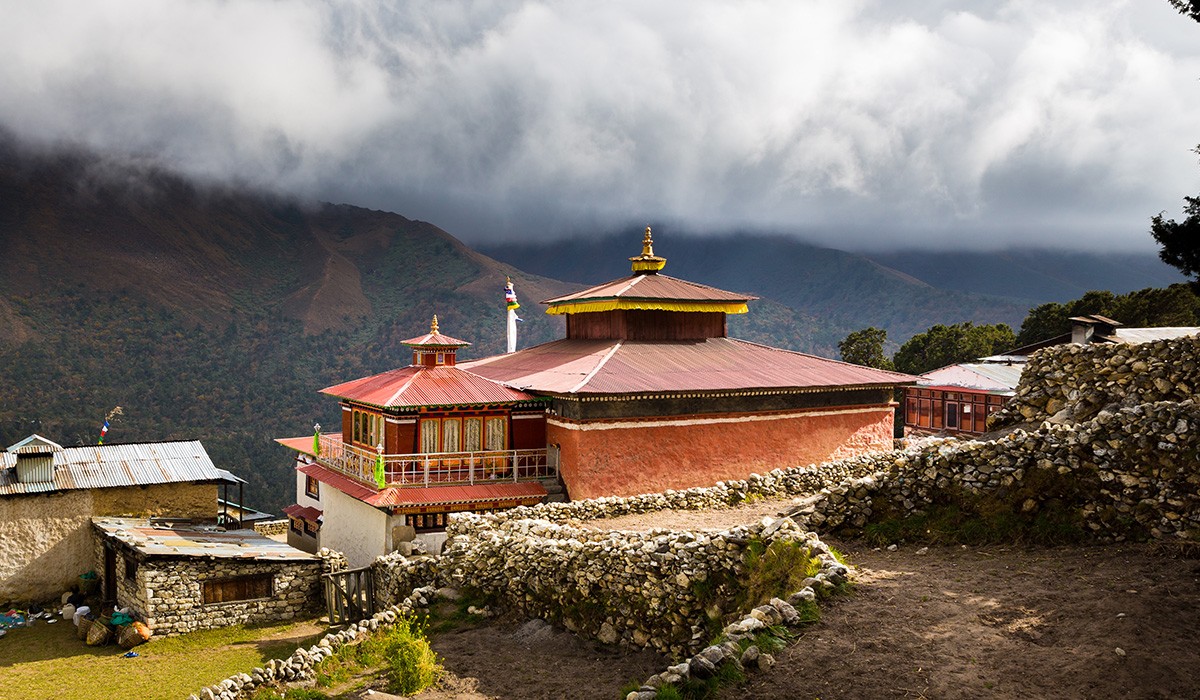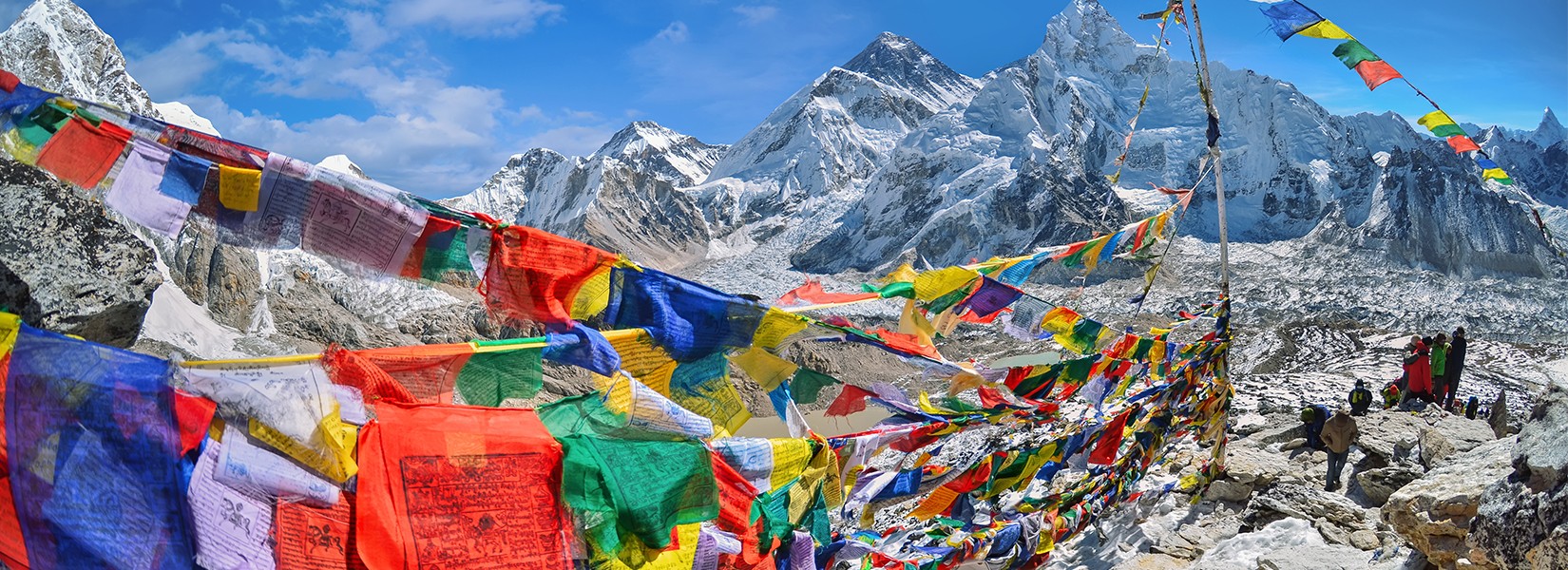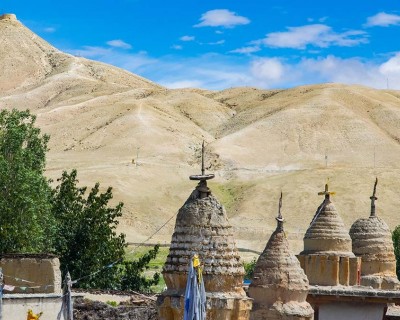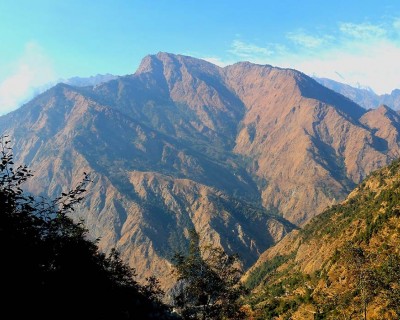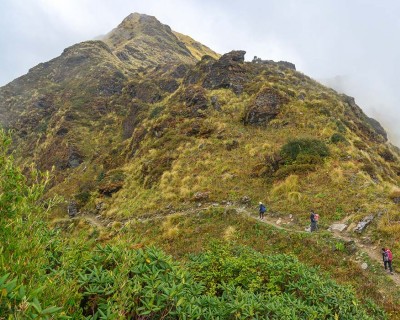Mani Rimdu
Mani Rimdu is among one of the major local festivals celebrated in Everest region. This major festival in the Himalayas is celebrated for 19 days following the sacred ceremonies and rituals. During teh final 3 days of the festival, the event is then designated for public viewing. Witnessing this celebration is an incredible opportunity to learn about the local Sherpa and Tibetan communities. Mani Rimdu celebrates the re-creation of the legendary event when Buddhism was established in Tibet by the great sage Guru Rinpoche (also known as Padmasambhava). The monks perform dances and rituals to conquer the symbolic demons and dispel them from the world using positive force.
It is believed that this celebration in the Buddhist communities started between 1907 and 1910. Then, it moved to the Solukhumbu region in about 1940; since then, it has been a major celebration in the region. It is believed that after the Sherpas moved from Tibet to the Himalayas of Nepal, this festival was introduced by Lama Sangwa Dorje in the Everest region who is also the founder of Pangboche Monastery. After the long rituals and ceremonies at the end of the festival, the monks perform masked dances known as ‘Cham’ and the guru blesses the public. This festival generally falls during October or November, depending on the Tibetan Lunar Calendar System.
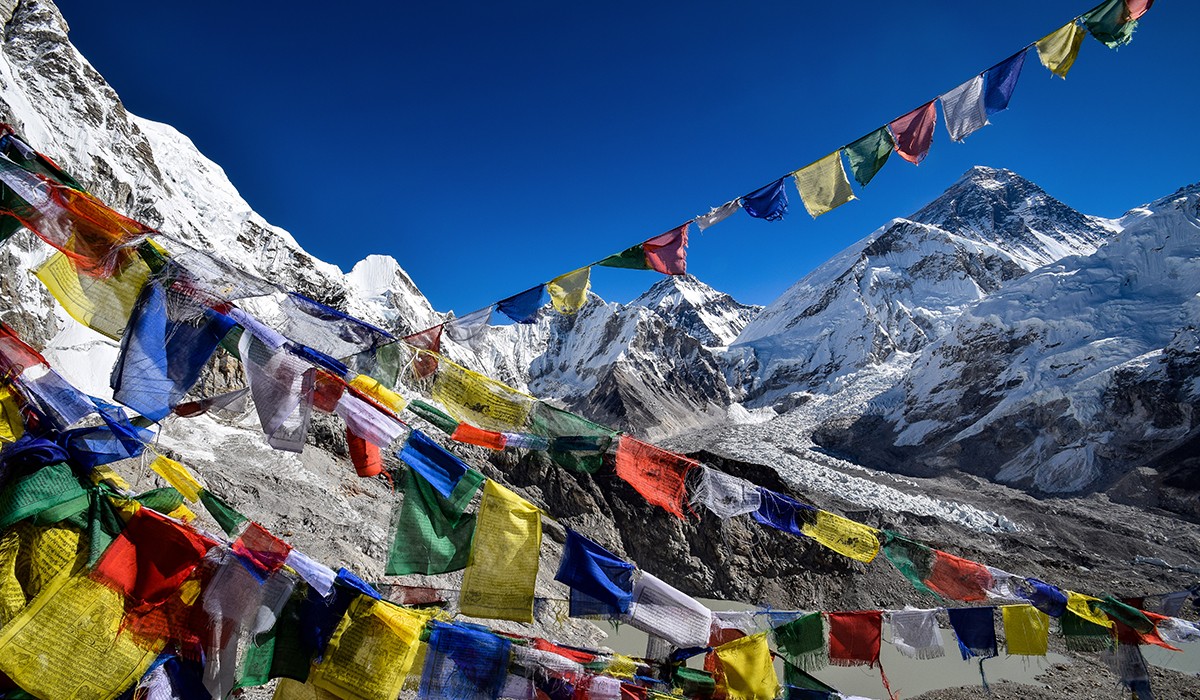
You May Like:People and Culture of the Everest Region
Dashain Tihar
Dashain and Tihar are two other major festivals in the country that are also embraced by the communities in the Himalayas. These festivals are major highlights of the autumn season and generally fall during October and November as per the Lunar Calendar System. Dashain is a 15 day long celebration where each day has its own significance. According to Hindu mythology, the Dashain is celebrated to commemorate the victory of Goddess Durga over the demon named Mahishaasura. Family get together to celebrate this major festival and put a Red Tika on the forehead from the elder as a form of blessing from Goddess Durga. People also make offerings to the goddess and worship her in a grand way. The colorful atmosphere creates a soothing ambiance during this festival. Flying kites, celebrating the holiday with friends and family and eating delicious meals are the traditional ways of celebrating this festival right.
Like Dashain, Tihar is also another major celebration in the country that lasts for 5 days. This festival is about celebrating human bonds, showing gratitude to the animals and worshipping the Goddess Laxmi, the goddess of wealth. The first day of the festival worships the crow known as the messenger of death (God Yama). Then, the second day is for the dog (guardian of God Yama’s gates), the third is for the cow (Holy Vahana of Goddess Laxmi), the fourth is the ox worshipping day (Govardhan Puja) and the final day is Bhai Tika (siblings worship each other). The entire country is decorated with lights during this festival and the valleys echo with the tunes of Deusi and Vailo (cultural singing and dancing ceremony).
Tibetan New Year
The Tibetan New Year also known as Lhosar is a major local festivals celebrated in Everest region among the Himalayan communities. This festival is mainly celebrated by the Tamang, Gurung and Sherpa ethnic groups in the country. However, each of the communities embraces the new year celebration at different points of the year. This celebration is marked by performing various cultural rituals that have deep-rooted ties with Tibetan Buddhism. Similarly, traditional dances are performed, prayers are offered and new year blessings are shared among friends and families. For the celebration of this new year, the families gather together and prepare traditional meals like momo (dumplings) and thukpa (noodle soup) which are essential for the celebration.
On the day of Lhosar, the people from Tamang, Gurung and Sherpa communities wear traditional attire, visit monasteries and celebrate in a communal manner. This new year celebration holds a prominent cultural significance in the communities involved. Families come together, express gratitude for the past year and wish prosperity and happiness for the year ahead during this celebration. The origin story of Lhosar are centuries old and can be linked with the pre-Buddhist Bon customs and Tibetan Buddhism practices. This beautiful celebration includes cultural and spiritual for the Himalayan communities.
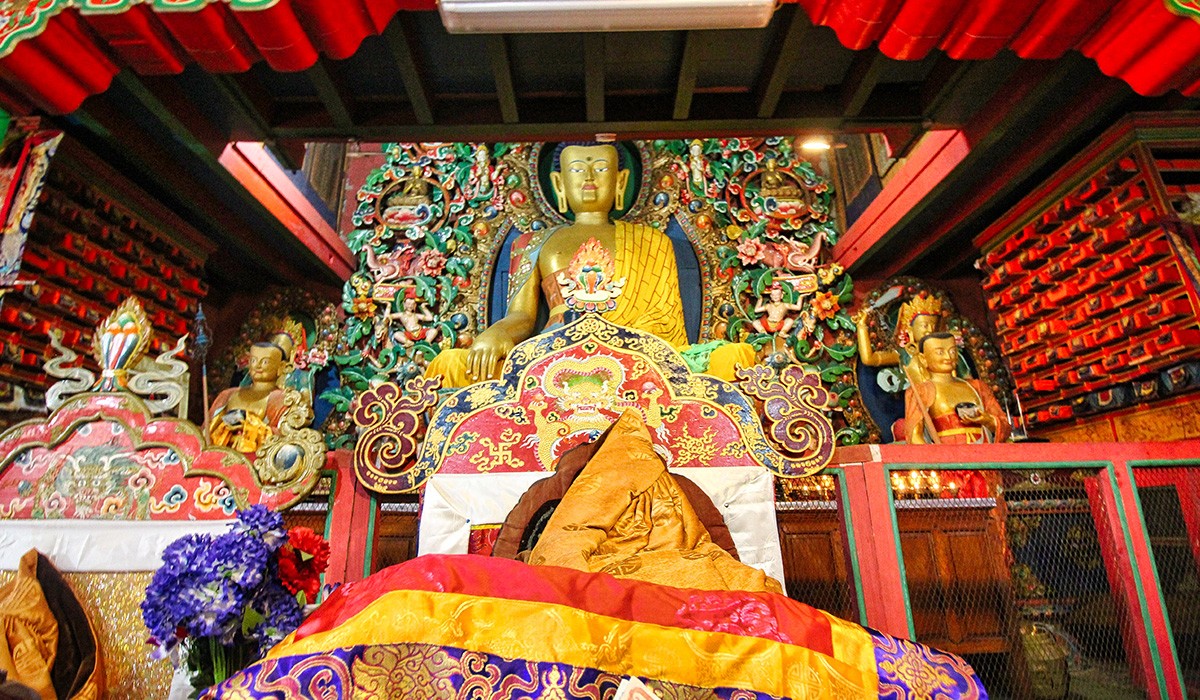
Don’t Miss:Everest Base Camp Trek for Families
Dumje Festival
Dumje is another incredible local festivals celebrated in Everest region. This festival commemorates the birth of the prominent guru in Tibetan Buddhism, Guru Rinpoche. It is believed that Guru Rinpoche was born from a lotus; thats why he is also known as ‘Padmasambhava’, which can be translated to ‘born from a lotus’. Guru Rinpoche is believed to have lived during the 8th century and has been credited for bringing Tibetan Buddhism practices to Nepal. This beautiful cultural event takes place after about two months at the end of the spring season. Dumje Festival lasts three days and during the celebration, the Lamas perform dances rituals and offer prayers. This festival is a family and community-oriented cultural event in the Sherpa communities. With the focus on the community spirt as a whole, the festival is hosted by major villages and towns across the region. For the festival, the hosting families are chosen to provide food and drinks.
To commence the festival a flagpole is erected at the local monastery. Villagers gather around the monastery to aid the hosting families with support. On the next day, worship and gathering at the monastery takes place to welcome head monk ‘Rinpoche’. Then, as the celebration progresses further ahead at the major destinations like Namche Bazaar, Tengboche, Pangboche and Khumjung, the monks perform the masked dance ‘Cham’. This dance, wearing traditional attire and holding swords is done to ward off evil spirits from the village. During the end of the Dumje Festival, the head monk offers blessings to the locals and the hosting family for the next year are chosen.
Buddha Jayanti
Buddha Jayanti, which celebrates the birth of Lord Buddha, has a profound spiritual significance in the country. Siddhartha Gautama, who was born in Lumbini, Nepal, in around 563 BCE, renounced his royal life to embark on the journey of enlightenment. He eventually attained the knowledge he was seeking under the Bodhi tree in Bodh Gaya, India when he came to be known as Lord Buddha. Born into the royal Shakya family of Lumbini, he abandoned everything to seek enlightenment. Hence, this festival celebrates his birth and life. The significant Buddhist sites in Nepal and across the world celebrate the birthdate of Lord Buddha in a very grand way. Among the Sherpa communities which have ties with Tibetan Buddhism, this celebration is very prominent. On this profound local festivals celebrated in Everest region, the locals flock to renowned monasteries and offer prayers to Lord Buddha.
People of Nepal follow this festival during the month of May based on the Lunar Calendar System. For the celebration of Lord Buddha’s birth, devotees also light butter lamps, which is the symbol of dispelling darkness and ignorance, promoting positive energy and mindfulness. Monks at the monasteries perform ceremonial chants of Buddhist scriptures and the monasteries have a spiritually uplifting atmosphere during this festival. At the monasteries in the Everest region, the monks chant mantras and play traditional instruments. Similarly, colorful flags are hung across the trail and around the monastery premises to spread spiritual blessings. On the auspicious occasion of Buddha Jayanti, villages and towns across the country organize parades where the devotees carry the statue of Lord Buddha and make rounds with prayers, chants and traditional music.
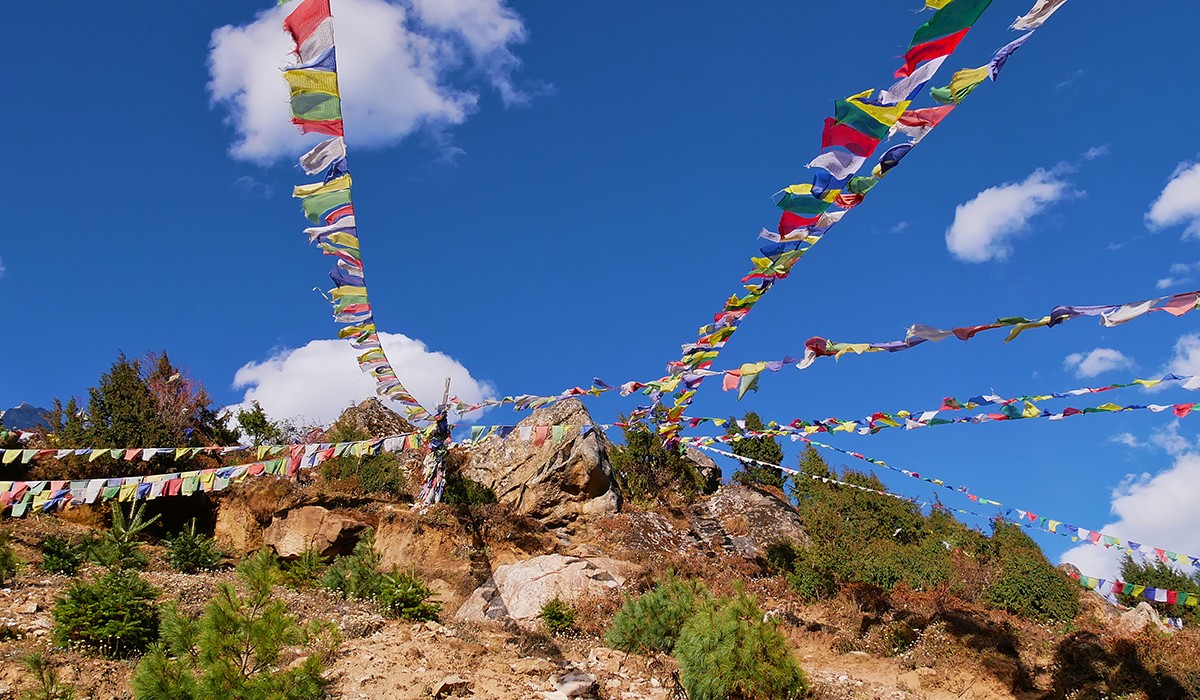
Also Read:Monasteries on Everest Base Camp Trek
Gyalpo Loshar ‘Sherpa New Year’
Gyalpo Loshar is one of the biggest celebrations in the Everest region. Referred to as Sherpa New Year this new year celebration takes place across the Sherpa settlements in the region. The Sherpa New Year falls in the month of February or March, depending on the Tibetan Lunar Calendar System. According to the ancient myth. Lhosar was first celebrated when an old woman named Belma learned about the measurement of time after reading the phases of the moon. Traditionally, the people went to local springs to offer prayers and gratitude to the Nagas and water spirits and smoke offerings were made to the spirits of the natural world. This celebration used to take an entire month until reaching the new year’s day. On the present context, this festival is celebrated for about two week after reaching the gal of the lunar cycle from the Falgun Shukla Pratipada.
This communal celebration revolves around family, food and a festive atmosphere. A deep-fried pastry Khapse’, which is commonly eaten during the celebration, marks the start of the Gyalpo Loshar. Two days before the start of the festival, the Sherpa families also gather together to enjoy a soup called ‘Gutung’, which is prepared with nine types of beans. On new year’s eve, the family clean and decorates their houses and after midnight, the traditional greeting ‘Tashi Delek’ is exchanged among the family members and friends to welcome the new year. Typically, the Sherpa household changes the Dhoja or prayer flags in their hom,e which symbolizes the fresh start of the new year. The special beverage called Changkol (made from Chaang) has prominent value in this celebration. The Sherpa natives sing, dance and offer prayers during this celebration to embrace the start of a new phase in life.
